Fly fishing for trout and mountain whitefish in our coastal rivers and streams during the month of December has always been a bit of a juggling act for me. Between Christmas tree hunting, putting up the lights and decorations, Christmas parties and shopping, there’s very little free time left over for fishing. But this past Sunday, my chores were all done and my wife and daughter had a baby shower to attend, so I decided to hit the river in attempt to squeeze in a couple hours of fishing and regain a bit of my sanity…
Upon my arrival at the river, my suspicions were confirmed, as it was free and clear of any signs of spawning activity, which was a huge relief, as I was armed with little more than my 2-weight fly rod, a small flybox full of nymphs and a single spool of 6X tippet. The recent rains along with the cool, crisp Arctic air - were welcome events, as they whisked away the strong, pungent smell of rotting salmon flesh that had plagued the river and surrounding forests over the past few weeks.
As I stepped over the icy boulders and entered the river, I felt an instant chill come over my body, as the cold, rushing water pressed hard against the backside of my thighs. I cautiously moved into position at the bottom of a fairly shallow run that was surrounded by a thick canopy of cedar tree limbs and barren branches. Although this piece of water was ideal for nymphing, I feared that the overhead branches were bound to take a toll on the contents of my fly box.
I’d fished this particular stretch of water several times since last winter and had managed to entice a few rather large trout on each and every occasion. I also recognized the fact that the mountain whitefish tend to be attracted to this type of water – especially at this time of year - so I was hopeful that my efforts would be rewarded once again.
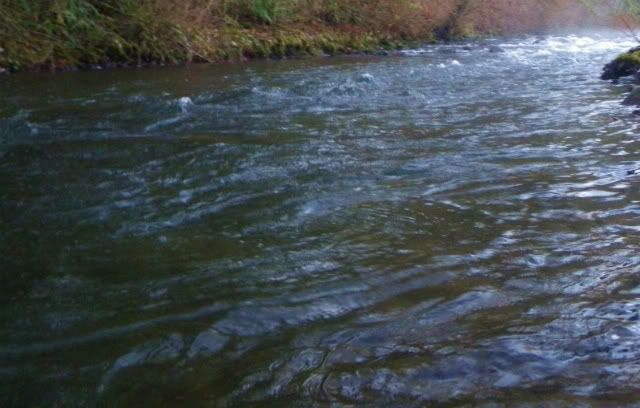
After analyzing the current’s flow patterns and making mental notes of all the potential lies, I decided that the most logical approach would be to start at the bottom of the run and work my way upstream fishing Czech-style with heavily-weighted nymphs. I adjusted my leader so it would match the depth of the water that I intended to target, and used 6X tippet – instead of my usual 7 and 8X – as I felt that there would be a very realistic chance of hooking into a few of the larger trout and mountain whitefish that tend to be found in this type of water.
I gradually worked my way upstream, working my nymph through every square inch of promising water. I had just started to work the inside edge of a long seam in the run, when I started to feel the occasional bump. I immediately realized that I had stumbled across a small school of whitefish. Being notorious “soft takers” I attached both my coiled sighter and drop indicators to my leader system. The results were immediate! My leader tightened and fly rod bent from the take of whitefish after whitefish…
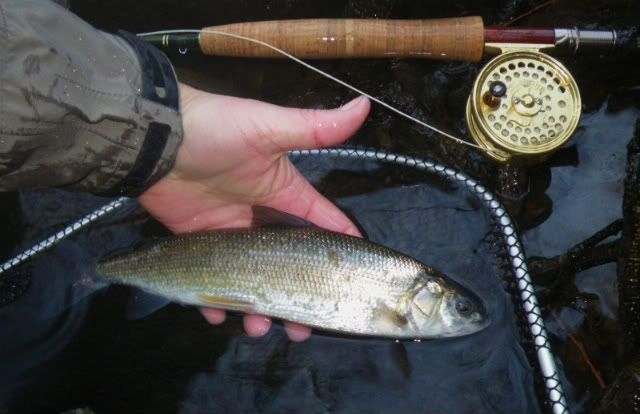
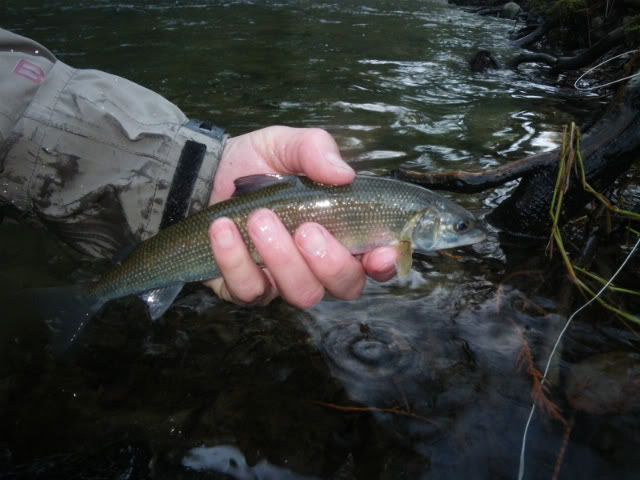
Being that the water was very frigid; the mountain whitefish that I encountered, only seemed to show an interest in my fly when I presented at a distance of about 2 to 6 inches above the river bottom, which is the application that a heavily-weighted Czech nymph is specifically designed for.
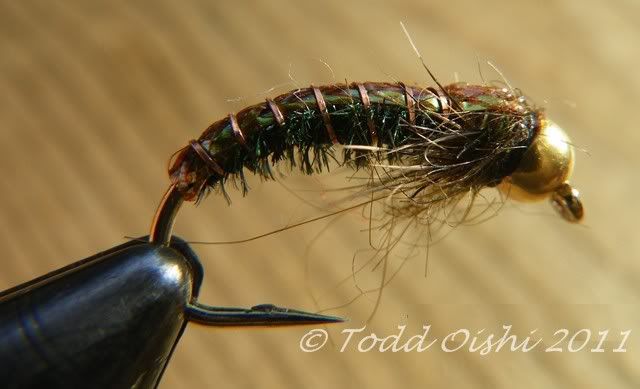
The depth of the whitefish really didn’t surprise me, as they typically feed on insects and eggs that they’re able to dislodge from beneath the smaller stones and gravel along the river bottom, or devour as they drift past their locations. It’s also a well-known fact that mountain whitefish rarely rise to take their prey or other food items, so identifying their depth and keeping your flies within that zone is absolutely essential when targeting them.
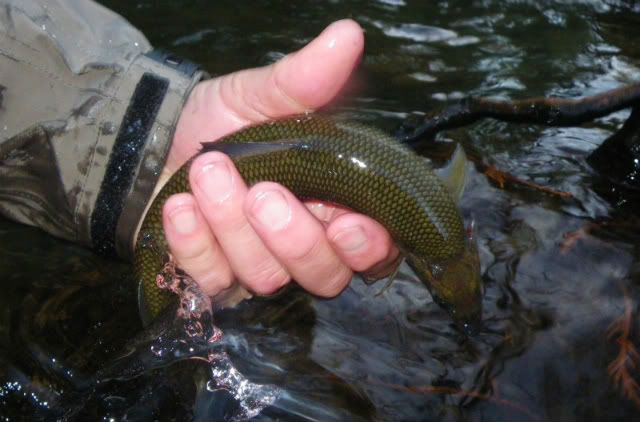
(note the intricate, honeycomb-like pattern on their backs that helps them to blend into their natural surroundings..)
After landing about a dozen whitefish and a lone cutthroat, I spotted a slight depression in the middle of the run that appeared only for a brief moment, as a calm window in the current passed overtop of it. Upon a closer inspection, it appeared as if it had the potential to hold a larger whitefish or trout, so I moved into position. The first drift produced nothing, but on the very next drift, the drop indicator on my leader paused and dipped slightly while the coiled sighter tightened. I struck instinctively, and felt the weight of a good-sized fish and saw its brilliant flash through the water’s broken surface. I knew in an instance that it was a trout - and a good one at that!
The trout ran downstream while using the current to its advantage. I stumbled along the slippery, icy bank until I was able to move into a safer position that was just slightly downstream of the trout’s. It made another run, paused momentarily, leapt a foot above the surface of the water, and made a final run before I was able to lead it out of the faster water and into a gentle eddy that had formed below me. In one swift move, I pulled my net from the magnet that held it on my back and gently scooped it into the confinement of the net’s soft, cotton mesh. The timing was impeccable, as the barbless hook dislodged from the trout’s mouth just as its tail slid over the outer rim of the net.
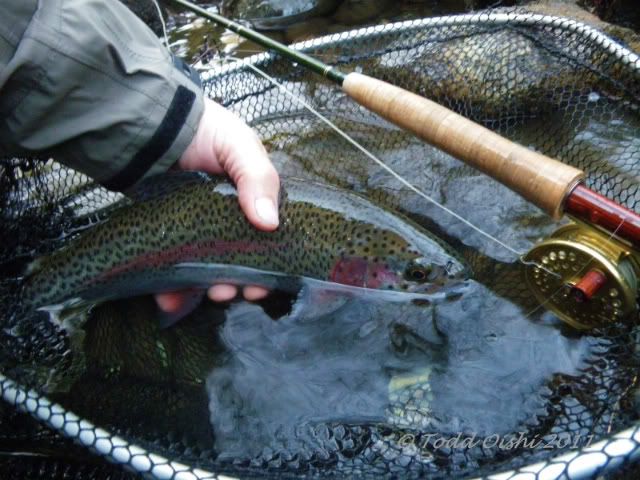
My heart was still racing as I stopped to admire its beautiful markings and overall condition, as this was by far the finest trout that this river had produced for me this season. Not wanting to injure this magnificent creature, I left it in the water as I took a few shots with my camera before I carefully released it back into its watery domain.
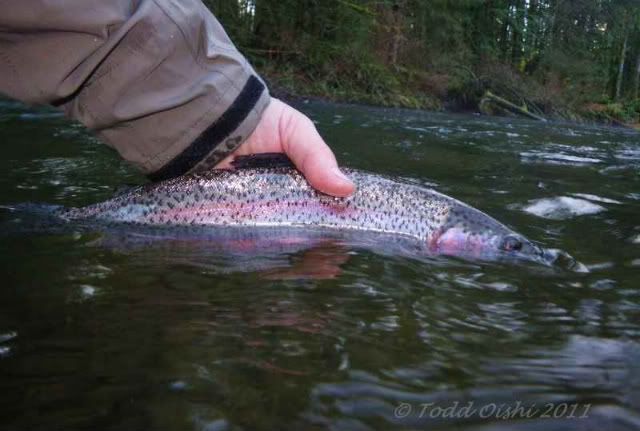
I paused momentarily to reflect on the events that had just transpired and decided to call it a day, as I wasn’t quite sure how I’d be able to top this experience, and couldn’t have imagined a better way to end what may very well have been my final fishing adventure of this year…


 Author
Topic: Fly Fishing for Mountain Whitefish & Trout, An Earlier Winter's Day on the River (Read 18549 times)
Author
Topic: Fly Fishing for Mountain Whitefish & Trout, An Earlier Winter's Day on the River (Read 18549 times)

